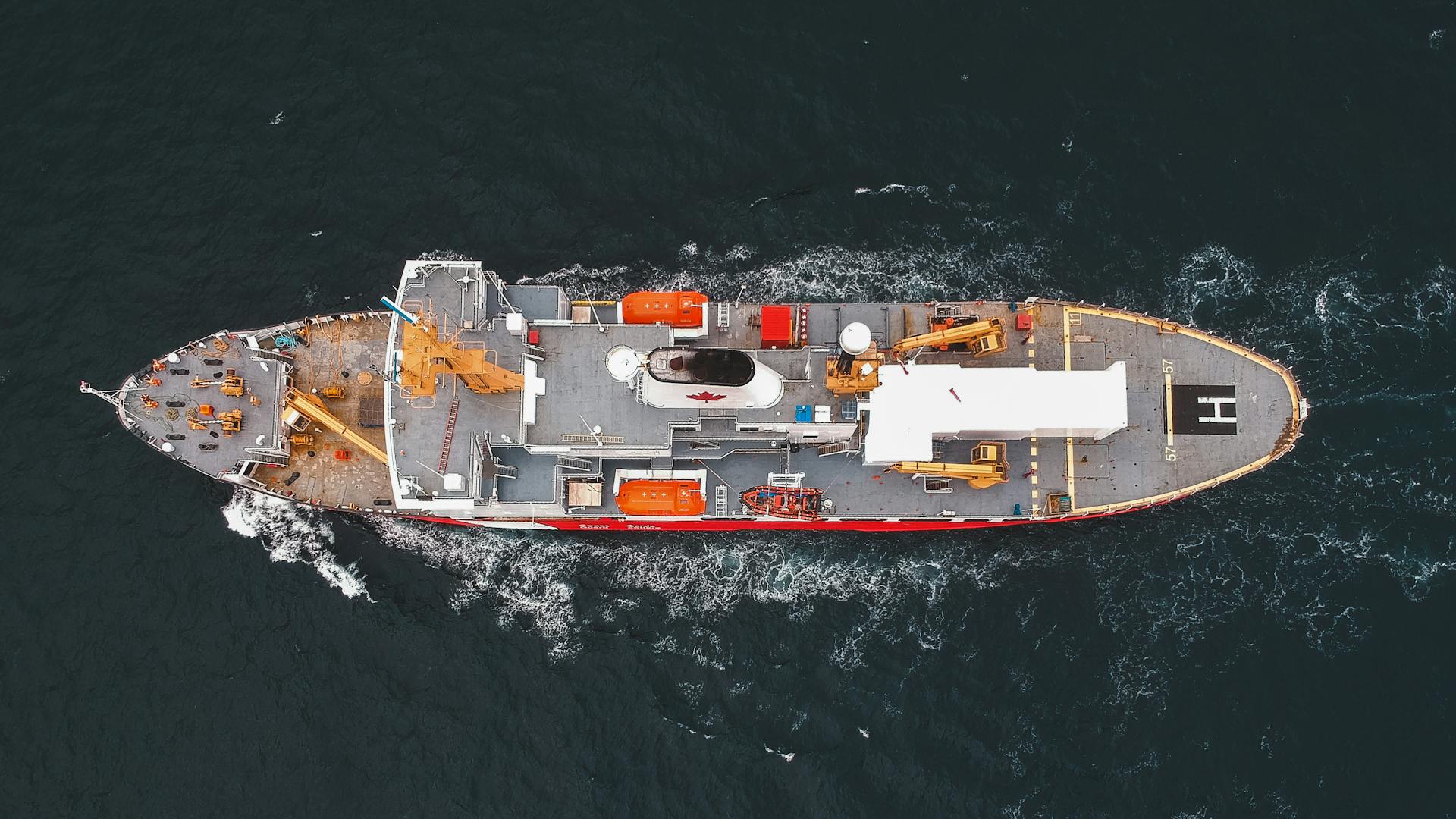
The Navy Reserve Merchant Marine Insignia has a rich history that dates back to World War II. The insignia was first introduced in 1942 as a way to identify and honor the contributions of Merchant Marines who served during the war.
The insignia features a distinctive anchor and rope design, which symbolizes the Merchant Marine's role in transporting goods and supplies across the seas. This design has remained largely unchanged over the years, a testament to the insignia's enduring significance.
The Navy Reserve Merchant Marine Insignia is a badge of pride for those who have served in the Merchant Marine, and it's a reminder of the important work they do to keep our economy and our nation running.
History of USNR Insignia
The USNR insignia has a rich history that dates back to 1925, when the Naval Auxiliary Reserve was renamed the Merchant Marine Naval Reserve.
In 1936, the Merchant Marine Act authorized the Secretary of the Navy to approve special distinguishing insignia for licensed officers who are members of the United States Naval Reserve.

The breast insignia of the present Merchant Marine Reserve, U. S. Naval Reserve (Eagle and Scroll), was approved for wear on merchant marine uniforms on 7 April 1938, by Secretary of the Navy, Claude A. Swanson.
It replaced the miniature cap device and was designed to be worn on the merchant marine uniform, specifically as a "gold embroidered or bronze gold plated metal pin consisting of a spread eagle surcharged with crossed anchors and shield."
The eagle design is based on the original eagle carved into the stern of the USS Constitution, which reflected the country's determination to remain free.
In 1941, Secretary of the Navy, Frank Knox, decreed that all Navy insignia bearing eagles were to have the heads facing to their own right.
The shield has 13 stars and stripes with crossed anchors and was taken from the U.S. Navy officer's cap device which was first authorized in 1869.
The scroll pattern was often found on the sterns of ships and contained the ships' names.
In April 1938, at a conference chaired by Captain Chester W. Nimitz, U.S. Navy, Assistant Chief of the Bureau of Navigation, the new insignia was presented to the four heads of the state maritime school ships.
This was the beginning of the Naval Science Departments at the maritime academies.
The insignia was accepted at this meeting along with the inclusion of naval subjects in the regular course of instruction at the schools.
In 1998, the Surface Warfare Officers School (SWOS) prohibited display of the badge by its students, and in 2011, the Navy discontinued the badge altogether.
USNR Insignia
The USNR insignia is a unique and distinctive part of Navy Reserve Merchant Marine history. It features a gold anchor with a rope around it, symbolizing the connection to the sea.
The USNR insignia is worn by members of the USNR Merchant Marine, indicating their affiliation with this special branch.
USNR History
The USNR, or United States Naval Reserve, has a rich history that's closely tied to the Merchant Marine Reserve. The Naval Auxiliary Reserve was renamed the Merchant Marine Naval Reserve in 1925.
In 1936, the Merchant Marine Act authorized the use of special distinguishing insignia for licensed officers who were members of the United States Naval Reserve. This led to the creation of a new insignia.
The new insignia, featuring a spread eagle surcharged with crossed anchors and shield, was approved for wear on merchant marine uniforms in April 1938. It replaced the miniature cap device.
The eagle design was inspired by the original eagle carved into the stern of the USS Constitution, which symbolized the country's determination to remain free. The scroll pattern was often found on the sterns of ships and contained the ships' names.
The shield on the insignia has 13 stars and stripes with crossed anchors, taken from the U.S. Navy officer's cap device authorized in 1869. The insignia was originally designed with the eagle looking to its own left.
However, in 1941, Secretary of the Navy Frank Knox decreed that all Navy insignia bearing eagles were to have the heads facing to their own right. This change was made to standardize the design.
In 1942, Merchant Marine Academy midshipmen were authorized to wear the Navy Reserve Merchant Marine Insignia, and could display it on U.S. Navy uniforms upon acceptance of a commission as a reserve naval officer.
Sources
- https://en.wikipedia.org/wiki/Navy_Reserve_Merchant_Marine_Insignia
- https://www.academia.edu/33382949/U_S_Naval_Reserve_Insignia
- https://ianewatts.org/blog/category/usnr-insignia/
- https://www.angelfire.com/ny/PimpDaddyMac/USNR.html
- https://military-history.fandom.com/wiki/Navy_Reserve_Merchant_Marine_Insignia
Featured Images: pexels.com


